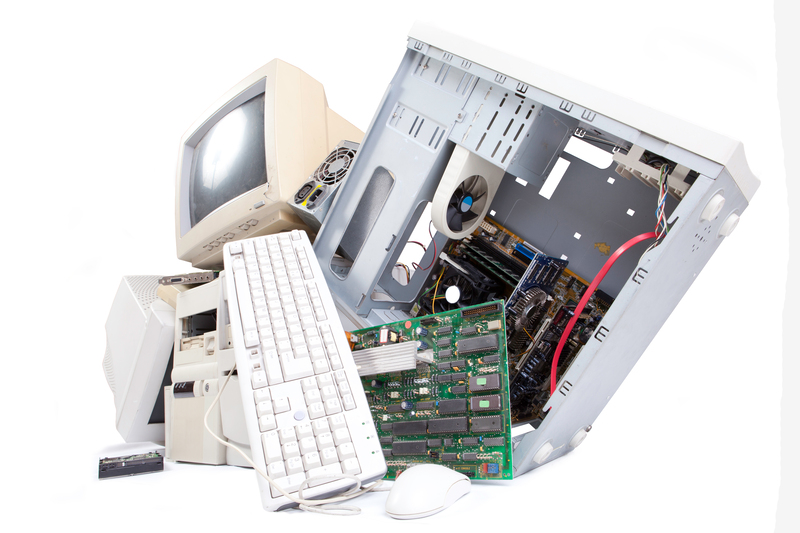Can Science Lead the Way to Stop Microplastic Pollution?
Microplastic pollution has become one of the most pressing environmental concerns of the 21st century. From the depths of the oceans to the peaks of remote mountains, these tiny plastic particles have infiltrated every ecosystem. But can science lead the way to stop microplastic pollution? In this comprehensive article, we explore the scientific efforts, breakthrough technologies, and innovations addressing the global microplastic crisis.
Understanding Microplastic Pollution
What Are Microplastics?
Microplastics are plastic particles less than 5 millimeters in diameter. They can be primary microplastics, manufactured at a microscopic size (for example, microbeads in cosmetics), or secondary microplastics, resulting from the breakdown of larger plastic debris. Their minuscule size makes them pervasive and difficult to remove from the environment.
Sources of Microplastics
Microplastic pollution arises from various sources:
- Clothing Fibers: Synthetic fabrics like polyester shed microfibers during washing.
- Personal Care Products: Microbeads in exfoliants and toothpastes.
- Vehicle Tires: Wear and tear release microplastics onto roads and waterways.
- Industrial Processes: Manufacturing and transportation of plastic goods.
- Plastic Waste: Environmental degradation of plastic waste into smaller fragments.

The Environmental and Health Impact of Microplastics
How Do Microplastics Affect Our Environment?
Microplastics accumulate in rivers, lakes, and oceans, where marine organisms ingest them, mistaking them for food. This not only leads to physical harm and death for marine life but also introduces toxic chemicals into the food web. According to recent studies, microplastic contamination extends to soil, air, and even drinking water, affecting terrestrial animals and humans alike.
Potential Risks to Human Health
Humans are exposed to microplastics via seafood, water, air, and possibly food packaging. Although the full health implications are still under study, early evidence suggests that microplastics may carry toxins, disrupt hormones, and trigger inflammatory responses.
Can Science Lead the Way to Stop Microplastic Pollution?
Science is at the forefront of the battle against microplastics. Researchers and innovators across the globe are working relentlessly to find solutions to halt microplastic pollution. Let's delve into the promising scientific pathways and technologies that aim to prevent, detect, and eliminate microplastics from our environment.
1. Advanced Detection and Monitoring of Microplastics
One significant challenge in combating microplastic pollution is detection. Traditional filtration and detection methods are limited by size and accuracy. However, science has led to the development of:
- High-precision spectroscopy: Techniques like FTIR and Raman spectroscopy allow scientists to detect and quantify microplastic particles even at the nanometer scale.
- AI and Machine Learning: Algorithms process massive datasets from environmental samples, increasing accuracy in identifying microplastics.
- Automated Sensors: Deployed in waterways and wastewater treatment plants for ongoing monitoring of microplastic levels.
2. Wastewater Treatment Innovations
Wastewater treatment plants are major bottlenecks for controlling microplastics before they enter rivers and oceans. Scientists are enhancing traditional filtration systems and introducing cutting-edge solutions:
- Membrane Bioreactors (MBRs): These utilize ultra-fine membranes to filter out microplastics efficiently.
- Electrocoagulation: Using electric currents, this process causes microplastics to clump together, making them easier to remove.
- Biochar and Nano-materials: Derived from organic or engineered materials, these adsorb microplastics from treated water.
3. Biodegradable Material Science
One of the most promising scientific advances is the development of biodegradable plastics. New materials degrade quickly and do not fragment into harmful microplastics. Some innovative examples include:
- Polylactic Acid (PLA): A plant-based polymer used in packaging and textiles.
- PHA and PHB: Polyhydroxyalkanoates are naturally occurring biodegradable plastics produced by microbes.
- Algae-Based Plastics: Polymers derived from seaweed or algae that break down easily in natural environments.
4. Green Chemistry and Enzymatic Degradation
Emerging breakthroughs in green chemistry are harnessing biology and chemistry together to tackle plastic pollution at the molecular level:
- Engineered Enzymes: Some bacteria and fungi produce enzymes that break down plastics into harmless molecules. Genetic engineering is enhancing these enzymes for faster degradation.
- Catalysts and Chemical Recycling: Research is ongoing into catalysts that depolymerize plastics safely, allowing them to be endlessly recycled without microplastic release.
5. Policy, Innovation, and Citizen Science
No scientific solution operates in a vacuum. Comprehensive strategies require:
- Interdisciplinary Collaboration: Combining chemistry, biology, engineering, and social science.
- Policy Support: Regulations limiting microplastic sources, investing in R&D, and incentivizing alternatives.
- Citizen Science: Local communities and volunteers aiding in monitoring, research, and cleanup.
Global Innovations in Fighting Microplastics
Notable Scientific Projects and Technologies
Several inspiring projects globally are leading by example in the war on microplastics:
- The Ocean Cleanup: Utilizing advanced barriers and booms driven by AI and hydraulics to remove plastics from oceans and rivers.
- WasteShark: Autonomous aquatic drones that collect floating debris and microplastics in waterways.
- Nano-scale Magnetic Beads: Scientists are experimenting with magnetic nanoparticles to attract and extract microplastics from water.
- Microplastic Capture in Washing Machines: Devices like filters can trap synthetic fibers during laundry cycles, preventing their release into water systems.
International Cooperation and Research
Stopping microplastic pollution requires a coordinated global effort. Scientific bodies like the United Nations Environmental Programme (UNEP), European Union, and GESAMP (the Joint Group of Experts on the Scientific Aspects of Marine Environmental Protection) are leading multinational research, knowledge sharing, and policy harmonization.
The Challenges Ahead
Why Is It Difficult to Eliminate Microplastics?
Despite all advances, stopping microplastic pollution remains complex:
- Widespread Distribution: Microplastics are found everywhere, including remote and pristine environments.
- Small Size: Their tiny dimensions make detection, removal, and study technologically demanding.
- Continuous Input: Ongoing plastic production and use perpetuate microplastic generation.
- Economic and Policy Barriers: Upgrading infrastructure and enforcing regulations demand significant investment and political will.
What Can Individuals and Industries Do?
While we wait for science to deliver scalable solutions, everyone can contribute to the fight against microplastic pollution. Here's how:
- Choose natural fibers when purchasing clothing.
- Limit single-use plastics and choose biodegradable options.
- Use laundry bags or filters that capture microfibers.
- Support brands and legislation committed to reducing plastic waste.
- Participate in citizen science projects and local clean-up events.

The Future: A Science-Led Path Toward a Cleaner Planet
Can science lead the way to stop microplastic pollution? The answer is a hopeful "yes" -- if research, innovation, regulation, and community action join forces. The path forward will involve:
- Continued scientific advancements in detection, decomposition, and material alternatives.
- Investment in infrastructure and global research.
- International cooperation on policies and standardization of methods.
- Shifts in corporate responsibility and consumer awareness.
Microplastics may have infiltrated every corner of our planet, but through the combined might of science, innovation, and collective effort, we can envision a world free from microplastic pollution. The emerging era of biodegradation, green chemistry, and advanced monitoring offers promising hope that science can indeed lead the way to stop microplastic pollution -- for good.
Frequently Asked Questions (FAQs) on Science and Microplastic Pollution
- How do scientists detect microplastics?
Scientists use advanced tools such as Raman and FTIR spectroscopy, microscopy, and AI-driven image analysis to identify and quantify microplastics in environmental samples. - Are there any natural solutions being developed to stop microplastic pollution?
Yes, researchers are investigating biological solutions like microbial enzymes and natural adsorbents (e.g., biochar) that can decompose plastics without leaving harmful residues. - What role do government policies play?
Policy interventions are crucial for regulating plastic production, using alternatives, limiting industrial release, and promoting research. Governments can incentivize innovation and prevent the further spread of microplastics. - Can industry innovation lead to less microplastic pollution?
Absolutely. Industry can adopt biodegradable materials, improve product design (like filters in washing machines), and support recycling infrastructure to minimize microplastic emissions. - Is it possible to fully remove microplastics from the environment?
Complete removal is extremely challenging due to their ubiquity and size. However, combining scientific innovation, prevention strategies, and cleanup technologies can drastically reduce their presence and impact.
In conclusion, the global scientific community is relentlessly working to find effective solutions to microplastic pollution. By supporting science-based approaches, we can all contribute to a cleaner, healthier future for our planet.